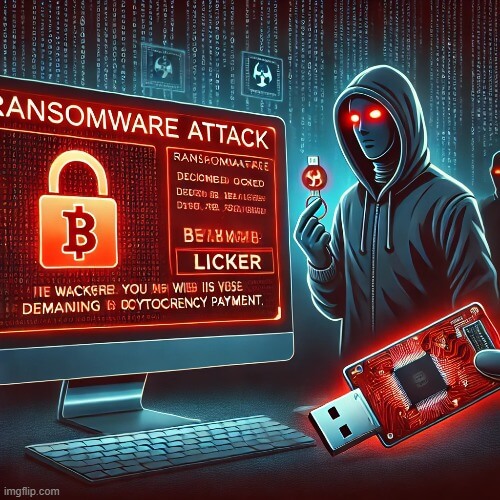Cyber threats such as phishing and ransomware pose serious risks to individuals and businesses. Cybercriminals use sophisticated tactics to steal sensitive information, disrupt operations, and extort money. Understanding these threats and learning how to protect yourself is essential for maintaining security online. This blog explores the most common cyber threats and provides actionable steps to safeguard personal and organizational data.
Understanding Cyber Threats
Cyber threats are malicious activities that target individuals, organizations, or computer systems to steal data, cause disruptions, or gain unauthorized access. These threats include phishing attacks, ransomware, malware, denial-of-service (DoS) attacks, and man-in-the-middle (MitM) attacks. Cybercriminals exploit vulnerabilities through various methods such as fraudulent emails, malicious software, or unsecured networks. The goal of cyber threats ranges from financial gain and espionage to causing operational disruptions. Understanding these threats and implementing strong security practices is crucial for protecting sensitive data and maintaining cybersecurity.
Cyber threats come in various forms, but some of the most common and dangerous include:
Phishing Attacks
Phishing involves fraudulent emails, messages, or websites designed to trick users into revealing personal information.
Spear phishing targets specific individuals using personalized information to appear legitimate.
Whaling attacks focus on high-profile targets such as executives or government officials.
Here is an X post on a phishing attack, showing just how dangerous and realistic phishing scams can be.
Ransomware Attacks
Ransomware is a type of malware that encrypts a victim’s files and demands a ransom for their release.
Attackers use phishing emails, malicious websites, or software vulnerabilities to infect systems.
Paying the ransom does not guarantee file recovery and encourages further attacks.
Malware and Spyware
Malware includes viruses, worms, and trojans that disrupt or damage systems.
Spyware secretly collects user data and monitors activities, often leading to identity theft.
Man-in-the-Middle (MitM) Attacks
In MitM attacks, hackers intercept communications between two parties to steal sensitive information.
This can occur on unsecured public Wi-Fi networks or through compromised devices.
Denial-of-Service (DoS) and Distributed Denial-of-Service (DDoS) Attacks
These attacks overwhelm a website or network with excessive traffic, rendering it inaccessible.
DDoS attacks use multiple infected systems to amplify the attack.
Steps to Protect Yourself from Cyber Threats

Protecting against cyber threats requires a combination of awareness, best practices, and security tools. Here are key measures you should implement:
1. Strengthen Password Security
Use strong, unique passwords for each account.
Enable multi-factor authentication (MFA) to add an extra layer of protection.
Consider using a password manager to securely store and generate passwords.
2. Be Cautious with Emails and Links
Avoid clicking on links or downloading attachments from unknown or suspicious emails.
Verify the sender’s email address and check for signs of phishing, such as misspellings and urgent requests.
Hover over links before clicking to preview their destination.
3. Keep Software and Systems Updated
Regularly update operating systems, applications, and security software.
Enable automatic updates to patch vulnerabilities promptly.
Use reputable antivirus and anti-malware programs to detect and block threats.
4. Use Secure Networks
Avoid using public Wi-Fi for sensitive transactions; use a VPN (Virtual Private Network) for added security.
Configure home Wi-Fi with strong encryption (WPA3) and a unique, strong password.
Disable remote management on your router to prevent unauthorized access.
5. Backup Your Data Regularly
Maintain regular backups of important files on external drives or secure cloud services.
Follow the 3-2-1 backup rule: three copies of your data, two different storage types, and one offsite backup.
Ensure backups are disconnected from the main system to prevent ransomware encryption.
6. Educate Yourself and Others
Stay informed about the latest cyber threats and scams.
Train employees and family members on cybersecurity best practices.
Follow cybersecurity news and advisories from trusted sources like the Cybersecurity & Infrastructure Security Agency (CISA).
7. Enable Firewalls and Security Features
Use firewalls to block unauthorized access to your network.
Enable security features like pop-up blockers and browser privacy settings.
Implement intrusion detection and prevention systems for enhanced protection.
8. Recognize and Report Cyber Threats
If you receive a phishing email, do not respond or click any links; report it to your email provider.
If you suspect ransomware or malware infection, disconnect from the internet and seek professional assistance.
Report cyber crimes to law enforcement agencies or cybersecurity organizations.
Conclusion
Cyber threats such as phishing, ransomware, and malware continue to evolve, making cybersecurity a critical concern for everyone. By implementing strong security practices, staying vigilant, and using reliable security tools, individuals and businesses can significantly reduce the risk of falling victim to cyber attacks. Taking proactive measures today will help ensure a safer digital experience for the future.
Why Businesses Trust SecureMyOrg for Comprehensive Network Security
At SecureMyOrg, we uncover and fix all possible security vulnerabilities of mobile and web, while providing solutions to mitigate risks. We are trusted by renowned companies like Yahoo, Gojek and Rippling, and with 100% client satisfaction, you’re in safe hands!







Some of the things people reach out to us for –
- Building their cybersecurity program from scratch – setting up cloud security using cost-effective tools, SIEM for alert monitoring, building policies for the company
- Vulnerability Assessment and Penetration Testing ( VAPT ) – We have certified professionals, with certifications like OSCP, CREST – CPSA & CRT, CKA and CKS
- DevSecOps consulting
- Red Teaming activity
- Regular security audits, before product release
- Full time security engineers.
Relevant Posts
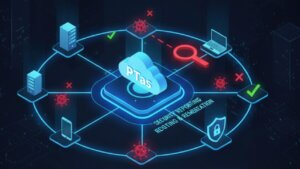
What Is Penetration Testing as a Service?
Penetration testing as a service (PTaaS) lets experts simulate real attacks to uncover vulnerabilities before hackers do. This guide explains the process, benefits, and costs, helping businesses strengthen defenses with predictable, ongoing security checks.
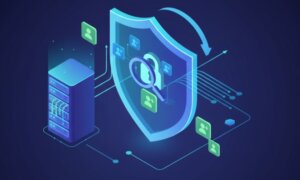
How To Inspect Encrypted Traffic Without Breaking Privacy
Network administrators face a challenge: securing systems while respecting privacy. This guide explains how to inspect encrypted traffic without breaking privacy using metadata, anomaly detection, and machine learning ensuring visibility, compliance, and trust.

How to Audit Infrastructure as Code (IaC) for Security Vulnerabilities
Discover how to audit Infrastructure as Code (IaC) for security vulnerabilities with this practical guide. Learn to scan IaC files using tools like Checkov, fix issues like exposed resources, and integrate audits into CI/CD pipelines. Protect your cloud systems from misconfigurations and ensure compliance with clear, actionable steps.
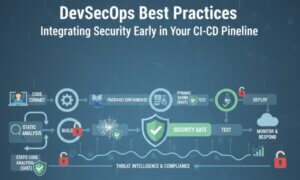
DevSecOps Best Practices: Integrating Security Early in Your CI/CD Pipeline
This article provides a practical guide to embedding security into every stage of your CI/CD pipeline. Learn core DevSecOps best practices like SAST, DAST, dependency scanning, secrets management, and compliance automation to catch vulnerabilities early, foster a culture of shared ownership, and build a secure-by-design development process that accelerates release cycles.

5 Cloud Misconfigurations That Lead to Data Breaches
Cloud misconfigurations are one of the leading causes of data breaches, yet they’re also among the most preventable. From exposed storage buckets to weak IAM policies, attackers exploit these mistakes daily. Learn about the top 5 misconfigurations and how your organization can fix them before they lead to costly data exposure.
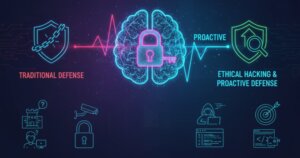
How Can Ethical Hacking Training Elevate Your Internal Cybersecurity?
Ethical hacking training empowers organizations to strengthen internal cybersecurity by uncovering vulnerabilities before attackers do. From mastering penetration testing to enhancing incident response, this training builds a proactive security culture. Learn how Secure My ORG’s programs can elevate your team’s skills and fortify defenses against modern threats like AI-driven attacks.
